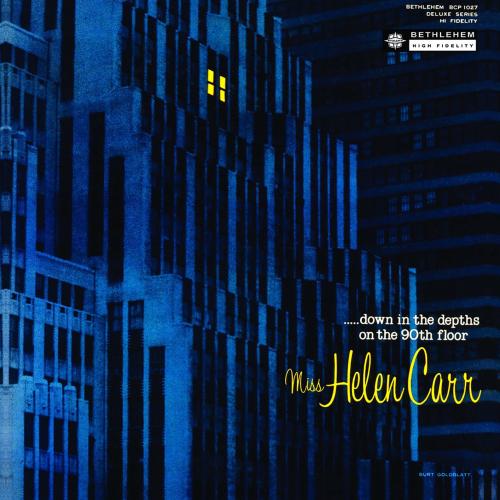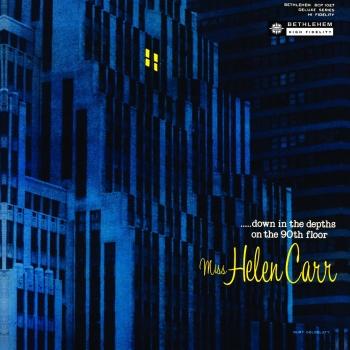
Down In The Depths On The 90th Floor (Remastered 2014) Helen Carr
Album Info
Album Veröffentlichung:
1955
HRA-Veröffentlichung:
27.09.2024
Das Album enthält Albumcover
Entschuldigen Sie bitte!
Sehr geehrter HIGHRESAUDIO Besucher,
leider kann das Album zurzeit aufgrund von Länder- und Lizenzbeschränkungen nicht gekauft werden oder uns liegt der offizielle Veröffentlichungstermin für Ihr Land noch nicht vor. Wir aktualisieren unsere Veröffentlichungstermine ein- bis zweimal die Woche. Bitte schauen Sie ab und zu mal wieder rein.
Wir empfehlen Ihnen das Album auf Ihre Merkliste zu setzen.
Wir bedanken uns für Ihr Verständnis und Ihre Geduld.
Ihr, HIGHRESAUDIO
- 1 Not Mine (2014 Remastered Version) 03:00
- 2 I Don't Wanna Cry Anymore (2014 Remastered Version) 05:14
- 3 Tulip or Turnip (2014 Remastered Version) 02:23
- 4 Memory of the Rain (2014 Remastered Version) 02:47
- 5 Down in the Depths of the 90th Floor (2014 Remastered Version) 03:11
- 6 You're Driving Me Crazy (2014 Remastered Version) 02:57
- 7 I'm Glad There Is You (2014 Remastered Version) 03:00
- 8 Moments Like This (2014 Remastered Version) 02:27
Info zu Down In The Depths On The 90th Floor (Remastered 2014)
One of the darkest vocal jazz albums of the 50s - packaged with a great title and cover image that features a lone lit window in a New York skyscraper! Helen has incredible backing on the record - a small combo that includes Charlie Mariano on alto sax, Don Fagerquist on trumpet, and Donn Trenner on piano - all gently sliding in behind Carr's blue vocals in a way that's similar to some of the Chris Connor work on Bethlehem from the same time. Titles include a near-perfect reading of 'Down In The Depths On The 90th Floor', plus 'Not Mine', 'Tulip Or Turnip', 'Moments Like This', 'I'm Glad There Is You', and 'Memory Of The Rain'.
Helen Carr, vocals
Charlie Mariano, alto saxophone
Donn Trenner, piano
Don Fagerquist, trumpet
Max Bennett, bass
Stan Levey, drums
Digitally remastered
Helen Carr
was born in Salt Lake City, Utah in 1922. She started singing as a child, and realized there was money in singing for an audience at a very young age. So, even though her first job in high school was as an usherette in a theatre, her dream was always to become a singer. Her family later moved to Illinois, and in 1936, after her father’s death, Helen and her mother started traveling around the country to finally settle in Oakland, California.
There is much speculation about her artistic beginnings, as there was another vocalist named Helen Carr on the west coast, presumably older, who performed in an amateur vocal contest at the Gateway Theater in Oakland in 1936, as published by the Oakland Tribune on July 28th of that year. It was not the same Helen though, because our singer took her last name Carr only after marrying Walter Carr in June 1941. A third singer with same name was working in the Pennsylvania area at the time. And in December 1947, possibly a fourth Helen Carr, or maybe one of the Helen’s we have already mentioned, appeared in a Broadway production of “Caribbean Carnival” and later in 1956 at the Copacabana in the revue “Spring Will be a Little Great this Year.” All in all, a real source of confusion for music historians.
There is no available information about what Helen Carr did during the first three years of her failed marriage, but it is certain that her life took a turn when she met Donn Trenner in San Francisco, in March 1945, a boy five years younger than her. By then, Helen was 23 years old, already separated, but not yet divorced from her husband, and had a four-year-old son, Gordon Carr, who lived with his father’s sister.
Donn Trenner was the pianist for the popular Ted Fio Rito Orchestra, engaged at the Golden Gate Theater in San Francisco from March 7-20. In his biography, Leave It to Me… My Life in Music, Donn explains: “I hooked up with her and we started to date. I didn’t know she sang until after we started going out.” Shortly after finishing Fio Rito’s stint at the Golden Gate Theater, Donn enlisted in the military.
Meanwhile, Helen continued to develop her singing career as a nightclub vocalist, as can be seen in an ad published on the San Luis Obispo Telegram of November 20, 1945, in which Helen is the headliner at Nina’s Shell Beach Cocktails. “Every night starting Monday— Helen Carr Vocalist. A cute little blonde singer who has been with big name bands in Seattle and the best places in San Francisco. You will really enjoy her.” If we take this advertisement at face value, we can surmise that Helen had already been singing professionally for a few years.
In the meanwhile, Donn was stationed at Sheppard Field, Texas, serving as a band musician. Before long, he was assigned to Special Services, where he wrote for the libraries of three different bands, and produced a weekly show called Shep Parade. “We put the show together and did it on Monday and Tuesday nights at the theater on the post. I invited Helen Carr to come down and sing in the show.” After eleven months, he was transferred to Scott Field, in Bellville, Illinois, about 25 miles east of downtown St. Louis. .... (Source: freshsoundrecords.com)
Dieses Album enthält kein Booklet










